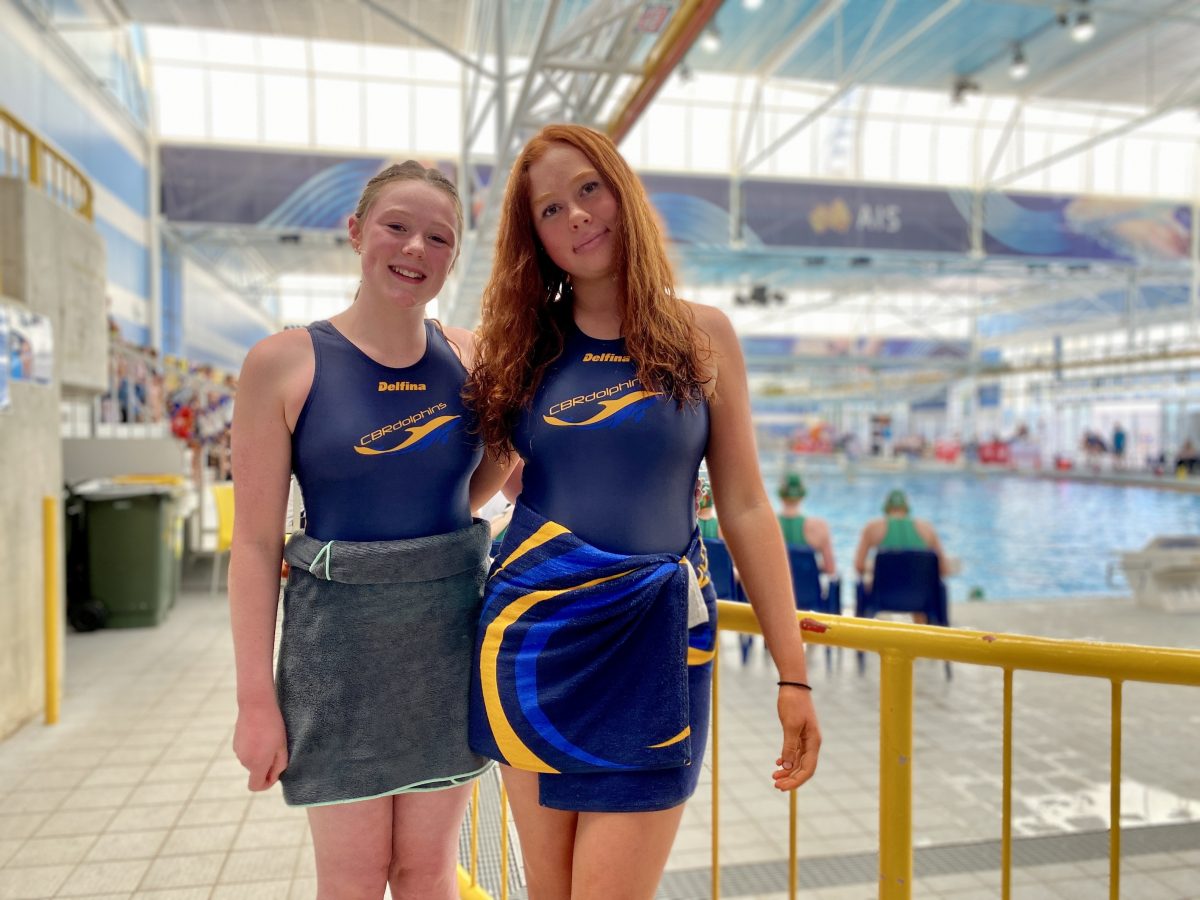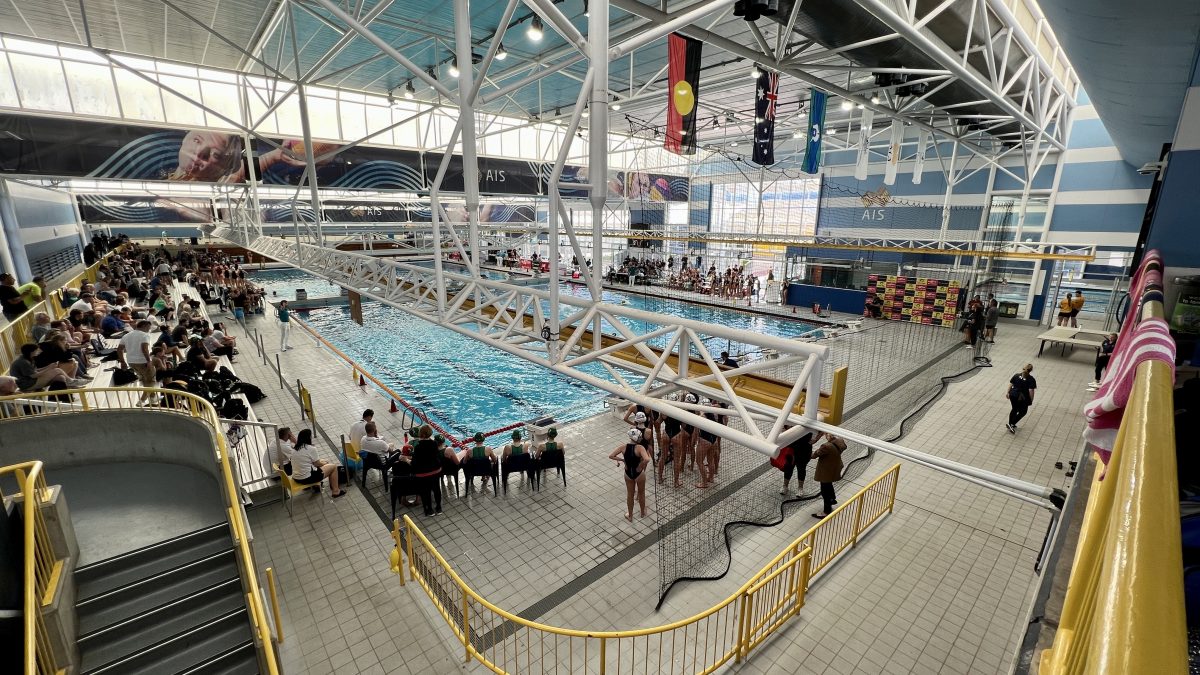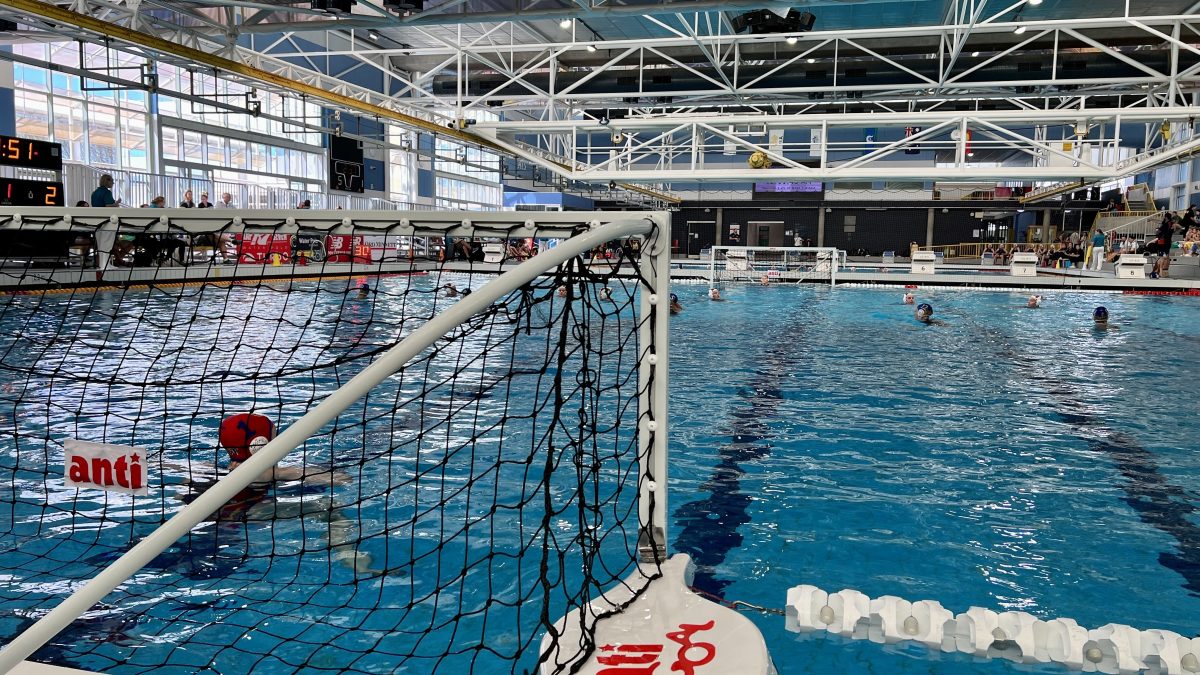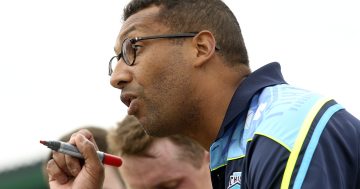
Water Polo ACT players Emma Bryant and Lillian Hogan. Photo: James Coleman.
Despite what images the name might conjure, there are no horses involved in the sport of water polo.
“It’s quite competitive,” says Emma Bryant, aged 14.
“A bit rough,” adds Lillian Hogan, also 14.
“It’s got goals like soccer and we’re set up quite similar to soccer,” Emma says.
“It’s not too fun when you get drowned, but it’s part of the sport.”
Canberra hosted the Water Polo Female National State Championships at the Australian Institute of Sport (AIS) for the first time last week. The event was held at the Aquatic Fitness Centre from 24 to 29 September, and attended by water polo teams from across the country.
Lillian and Emily are on the under-15 team for Water Polo ACT, and by midday on Monday (25 September) had already battled against NSW and Victoria.
“The first game was fun, but we didn’t really warm up properly, but we won the second game,” Emma says.
When it started three years ago, Water Polo ACT had 330 members. It now has close to 1000, spread out across six local clubs, and not counting a further three clubs in Wagga Wagga with a combined 350 members.
Water Polo ACT CEO Ryan McDermott says interest in the sport is growing “significantly”.
“Word of mouth is travelling pretty quickly,” he says.
“People see it as a fun to stay active, particularly over the summer period. We’re heading into one of the hottest seasons in terms of weather, so people are encouraged to play a sport where they can cool off but still be involved in a team sport, and have that social and fun kind of play.”

The Aquatic Fitness Centre at the Australian Institute of Sport (AIS). Photo: James Coleman.
Water polo is played by two teams of seven players each. Much like football (or soccer), players score by throwing the ball into the opposing team’s goal. The team with the most goals on the scoreboard at the end of the game wins the match.
The game is thought to have originated in Scotland in the mid-19th century (famous for its warm weather) but has become known as one of the most difficult sports to play simply because there is no downtime. When you’re not swimming madly, you’re treading water to stay afloat.
“You have to be very fit,” Ryan says.
Water Polo ACT caters for players “aged seven to 70” through a variety of competitive club programs, and as of 12 months ago, purely social games for those who just want to “turn up and play” too.
“It’s a great way for people to try the sport for the first time, and we’re seeing people graduate into playing grade-level water polo after they’ve grown to love it.”

It’s like soccer, but more watery. Photo: James Coleman.
Lillian and Emma were both introduced to the sport in school, Lillian in Year 5 and Emma in Year 6.
“My primary school principal forced me into training and I’ve just loved it ever since,” Lillian says.
“It was promoted at my school and there was an after-school program and I just started that, and then it evolved from there,” Emma says.
Both now train seven days a week, and already have an Australian Youth Championship under their belt. Not only was 2023 the first time Canberra has hosted the water polo national championships, but it was also the first time either girl has competed in one too.
“We want to make the Australian squad,” Emma says.
As for the Olympics?
“We’ll see.”
















